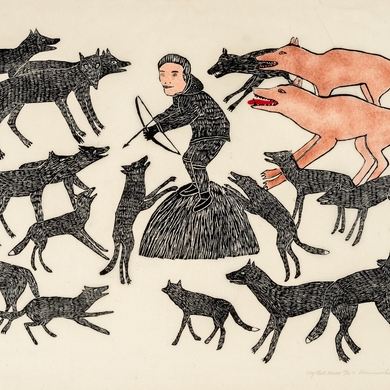In 1819, a mature Francisco de Goya retreated to his country house, La Quinta del Sordo (Villa of the Deaf One), to live out his last days as a deaf and disconsolate old man. He was left without hearing after an unknown illness in the 1790s, and had since become paranoid, fearful of death, and above all, terrified of losing his mind. It was at this house, between the years 1819 to 1823, that he created the renowned and gruesome “Black Paintings,” 14 murals full of ghouls, witches, and horned figures, their faces and bodies contorted beyond measure. Over a century later, the artist Philippe Parreno saw the disturbing works in his teens and never forgot them. “I was inspired by the darkness of it,” he has said. “They were a little bit occult, a little bit weird. They were incomplete, in a way, which was a big part of the attraction.” In Parreno’s new 40-minute audiovisual work, named after the mad artist’s house, he addresses those paintings. —Elena Clavarino
The Arts Intel Report
La Quinta del Sordo: Philippe Parreno

A film still from La Quinta del Sordo, by Philippe Parreno.
When
July 21 – Sept 4, 2022
Where
Museo Nacional del Prado. Paseo del Prado s/n. Madrid. 28014
Etc
Photo: © Museo Nacional del Prado



